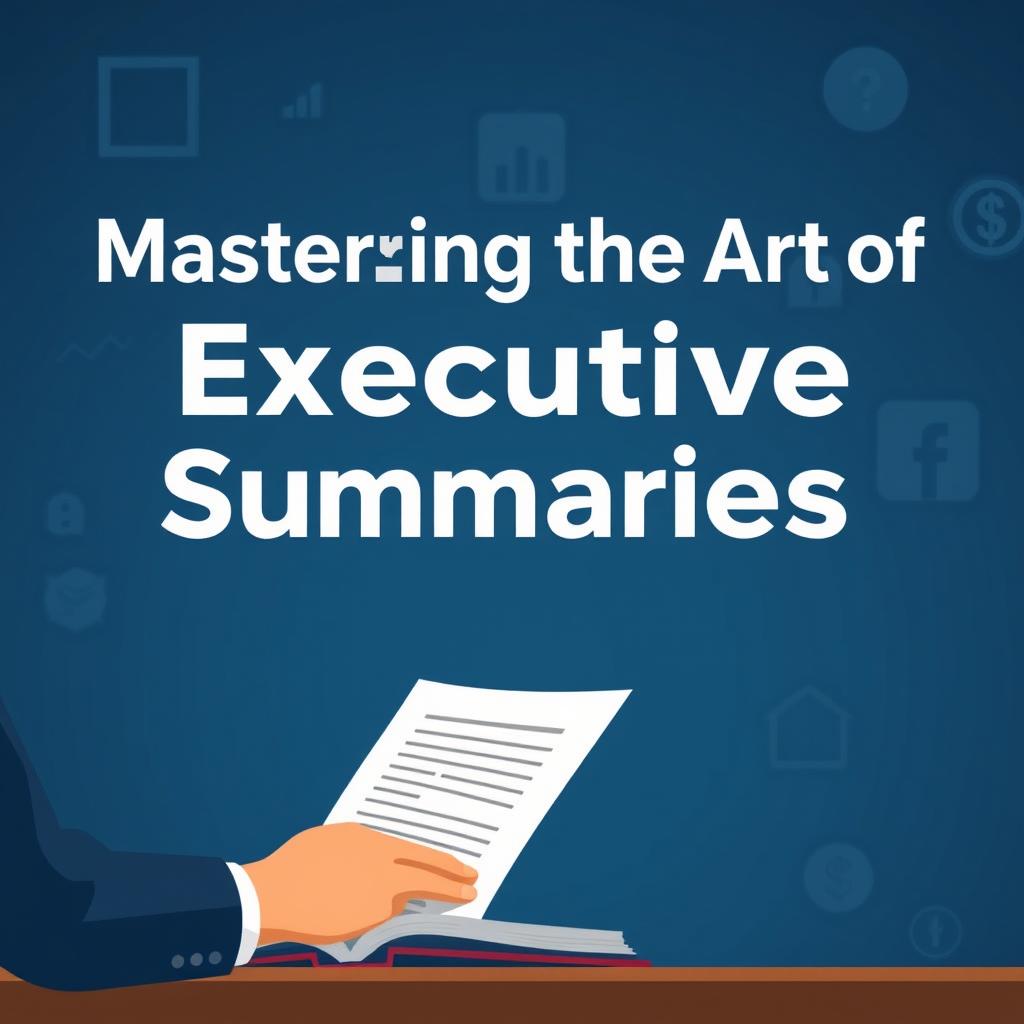Mastering the Art of Executive Summaries: Your Guide to Competitive Edge
Estimated Reading Time: 6 minutes
- Understand the key components of effective executive summaries.
- Learn strategies to communicate competitive advantages.
- Master the art of concise and impactful written communication.
- Explore practical examples and templates for crafting summaries.
- Get step-by-step guidance for writing executive summaries.
Table of Contents:
- Introduction
- Examples and Templates
- Step-by-Step Guide: How to Write an Effective Executive Summary
- Call to Action
- FAQ
Introduction
In today’s fast-paced and fiercely competitive business environment, the importance of executive summaries can’t be overstated. These concise documents are not just helpful practices; they are essential survival tools for organizations aiming to stay ahead. Think of executive summaries as the vital lifeblood that distills extensive and complex data into a powerful, digestible form that facilitates rapid, informed decision-making. By failing to prioritize the crafting of effective executive summaries, one risks entering the battlefield of business with a significant disadvantage—a self-imposed blind spot that could derail well-laid plans.
However, there’s a common misconception that executive summaries simply encapsulate key information. In reality, their efficacy lies not just in what they include but in what they’re able to expertly omit. The skillful curation of content allows for the focus to remain on the essentials that will captivate and inform the audience—whether they are potential investors, stakeholders, or team members.
A well-constructed executive summary must accomplish several critical objectives:
- Illuminate Unique Selling Propositions (USPs): It should spotlight the organization’s distinctive advantages while contextualizing them within the competitive landscape.
- Ensure Strategic Alignment: The summary should act as a conductor’s score, ensuring that every initiative aligns with the company’s overarching mission.
- Attract Investment: A compelling narrative about potential returns on investment must be clearly articulated to entice potential backers.
- Facilitate Win-Loss Analysis: This powerhouse tool must analyze successes and failures to drive future decisions.
- Synthesize Competitive Intelligence: Use it to glean insights into competitors’ strategies for informed decision-making.
While the art of crafting an executive summary is challenging, it is nowhere near insurmountable. In this post, we’ll explore the core strengths of effective executive summaries and provide step-by-step guidelines to help you navigate this essential task. Whether you’re looking to enhance your organizational communications or simply seeking to refine your own personal capabilities, we have the tools you need. For further insights and personalized AI support, don’t forget to explore more at professionalizeitto.me.
Examples and Templates
To deepen your understanding of effective executive summaries, let’s break down some examples that illustrate their powerful impact.
1. Competitive Advantage Communication
Example: SpaceX
SpaceX’s executive summaries highlight their pioneering reusable rocket technology. Instead of merely discussing rockets, they emphasize how their innovation drastically reduces costs, giving them a significant edge over traditional aerospace companies.
Template:
- Headline: Unique Selling Proposition
- State your product/service clearly.
- Discuss the unique advantages it offers.
- Contextualize it within competitive environments.
2. Strategic Alignment
Example: Google
With a plethora of products, Google utilizes executive summaries to ensure that every initiative remains in line with its mission of making information universally accessible.
Template:
- Headline: Strategic Purpose Alignment
- Briefly describe the strategic goal.
- Outline how the project or initiative aligns with this goal.
- Specify expected outcomes and benefits.
3. Investment Attraction
Example: Startups
Startups often construct executive summaries that present a compelling ROI narrative. Data-driven projections entice investors to look closer rather than dismissing the opportunity at a glance.
Template:
- Headline: ROI Narrative
- Define the problem and solution.
- Use metrics to showcase potential financial benefits.
- Highlight the team’s capabilities.
Step-by-Step Guide: How to Write an Effective Executive Summary
- Identify Your Audience: Understand who will read the document; tailor your language accordingly.
- Outline Key Points: Include essential items you wish to convey.
- Draft with Brevity: Aim for clarity over exhaustive detail; every word should count.
- Use a Clear Structure: Employ headings, bullet points, and tables where applicable.
- Review and Refine: Edit rigorously for clarity, tone, and conciseness; consider soliciting feedback from trusted colleagues.
For hands-on guidance and to get started on perfecting your executive summaries, we invite you to discover the wealth of resources available at professionalizeitto.me. Sign up for our newsletter for regular updates or book a consultation with our experts today.
Call to Action
Harness the power of effective written communication to propel your organization forward. Don’t leave the first impression to chance—elevate your executive summaries into strategic instruments of success. Visit professionalizeitto.me today to explore further insights, tools, and personalized AI support tailored specifically for your needs.
FAQ
- What is an executive summary? An executive summary is a concise document that summarizes larger reports or proposals to give readers a quick understanding of the content.
- How long should an executive summary be? Typically, an executive summary is 10% of the length of the full document but should not exceed one page.
- Who should read an executive summary? It is intended for executives, stakeholders, investors, or anyone needing to grasp the essence of the full report quickly.
- How do I start writing an effective executive summary? Begin by clearly identifying your audience and outlining the key points you want to convey.



